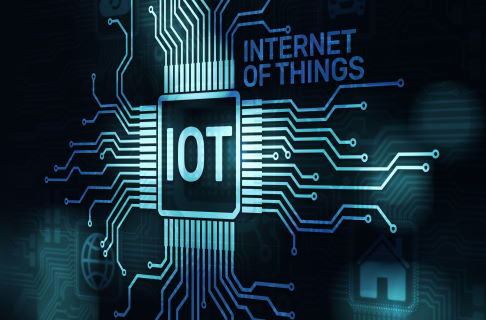The present era is often described as an incredible time characterized by rapid technological and digital change. In only a decade, you've probably seen dramatic developments around you. Thanks to recent developments in data science, people now enjoy AI-powered intelligent assistants, driverless cars, surgical bots, and, of course, the Internet of Things (IoT).
IoT uses linked devices and systems to exploit data generated by hardwired sensors and actuators in machines and other networked hardware. When these data are appropriately handled, they produce helpful information. In the focal region, sensor-based modules have been fitted.
IoT is expected to gain even greater traction soon, and this convergence of technological advancements is likely to result in new types of services that improve consumer quality of life and company efficiency.
Benefits Of IoT
The IoT connects a wide range of devices that aren't traditionally associated with internet connectivity. These items are brought to life and may connect to the internet once they’ve been injected with technology.
These added functionalities allow users to watch and control these devices from afar. Along with the emergence of these technologies, professional services like those provided by managed IT services in Cincinnati from NetGain Technologies have made IoT adoption more viable. Today, in a society driven by digital technology, IoT plays a significant part in the modern lives of users.
Programming Tips For IoT Projects
More IT companies are looking into both the external and internal markets as IoT projects continue to grow.
Building and designing software and hardware for the Internet of Things might be challenging since it necessitates a lot of solid design practice. So, to help you through the process, here are some tips to get programmers on the right track with IoT:
Understanding How It Will Be Used
Understanding how your projects will be utilized by consumers is crucial as it will help you choose when to set your requirements for those projects and how they’ll be put to good use. Moreover, having the user’s needs and their experience in mind while programming will help you decide which programming language to use.
Developing A Data Map Structure
Between the data sources and the target data, programmers can produce a data map. Keep in mind that integration focuses on utilizing available data in ways. A data map is built between the new and old data sources, a data map allows one to be accessible to the other.
A map is a data structure that’s commonly used for quick data lookups or searches. It saves data as key-value pairs, with each key being unique, and contains matching tables in a database with code objects for a better-structured approach, especially when working on projects.
Understanding data structures is always important when it comes to being a skilled programmer. For instance, to comply with the General Data Protection Regulation, a business must understand how its data links to other parts of the organization. Identifying critical data sources and any gaps or threats is crucial to mitigate them.
Using Scripts
On a computer, everything is programmed in distinct languages. The common languages used by IoT developers and programmers include Python and JavaScript. Scripting, on the other hand, is a method of running a large amount of code in a single file. It's used to automate computer procedures and produce web pages.
Programmers use scripts to develop web-based platforms for both information processing and code that runs on the device itself. Using scripts doesn't only help with the development of modern web applications, but it also makes the process easier.
Developing Effective User-Interface Designs
The user interface of an IoT project is critical for meeting user expectations and ensuring that your product functions properly. A well-executed user interface promotes a successful connection between the user and the application through contrasting graphics, a simple interface, and sensitivity.
By choosing an effective user-interface design, you can make it easy for the user to maximize the use of your IoT project. It doesn't only make your projects accessible, but it also makes them easy to utilize or troubleshoot should the user face any problems.
In return, this promotes user interaction, increases productivity, improves functionality, and provides touchpoints for users as they explore technology-based initiatives.
Project Testing
Putting your projects to the test is vital as it uncovers defects before the project is delivered to the client or put up in the market. It ensures the software and hardware's quality and helps improve the project's durability and ease of use.
Moreover, project testing enables programmers to develop products or services that are stable and reliable while maintaining specific technological requirements. The goal of this step in the project development is for your project to perform well to deliver high-quality and long-lasting tools.
Evaluating The Project
The ultimate goal of project evaluation is to enhance the project using the data gathered. It assesses the project to determine whether or not it has met its objectives. The assessment results may be used to show the efficacy of your program, identify methods to enhance it, change the planning process, and show accountability.
Project evaluation helps showcase the success or advancement of the developed project. Ultimately, it’s a platform for your team to determine whether or not your project is a good investment for the programming market.
Take Away
The Internet of Things offers incredible benefits. It continues to astound users in various industries, including healthcare, manufacturing, and even personal life, making technology more accessible and possible.
The future of IoT is bright and diversified, and it’ll only be a matter of time before the technology's potential uses are realized, putting programmers further in the spotlight.








